WATERS OF LIFE
LIFE UNDERWATER
- VEGETATION
- PLANKTON
- PHYTOPLANKTON
- ZOOPLANKTON
- BENTHOS
- FISH
- AMPHIBIANS AND REPTILES
PLANKTON - PHYTOPLANKTON - BIODIVERSITY
![]() FLASH PLAYER IS REQUIRED TO SEE THE CONTENT OF THIS PAGE
FLASH PLAYER IS REQUIRED TO SEE THE CONTENT OF THIS PAGE
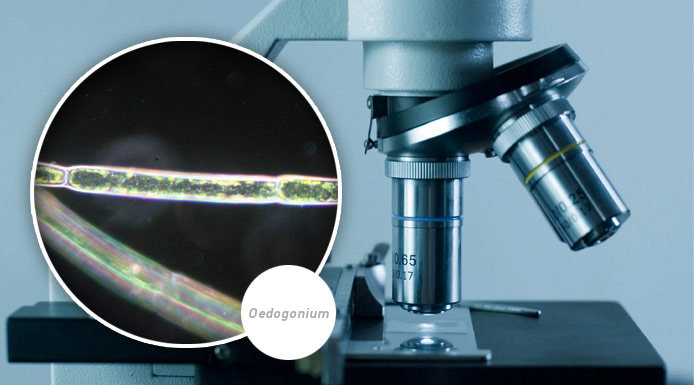
Oedogonium = 0.02 to 0.04 mm
Green algae:
Green algae include a great variety of species of various shapes, both microscopic and visible to the naked eye.
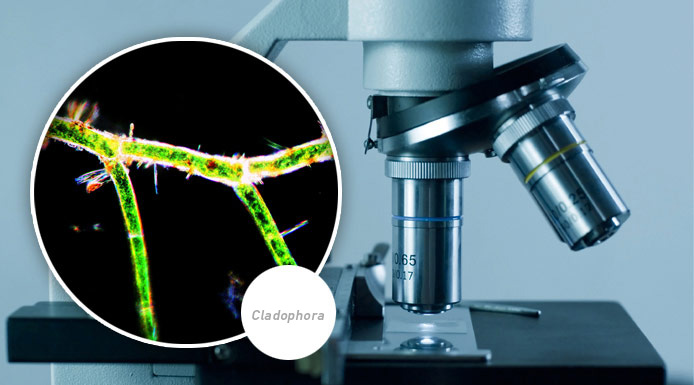
Mass of Cladophora = up to 15 m
This microscopic photo shows the cells of the alga Cladophora.
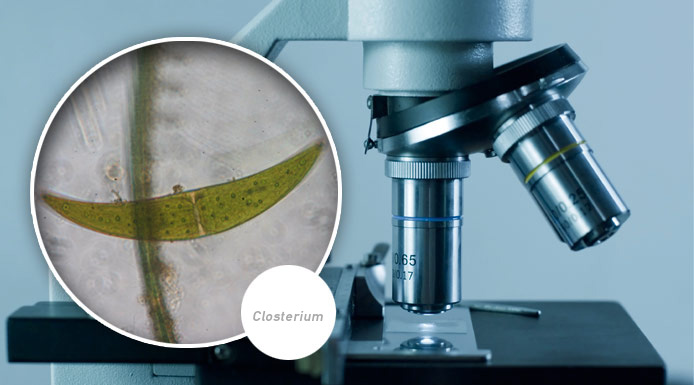
Closterium = 0.3 to 0.6 m
Chlorophyll gives them their green colour and allows them to photosynthesize.

The alga Closterium is seen here from another angle.
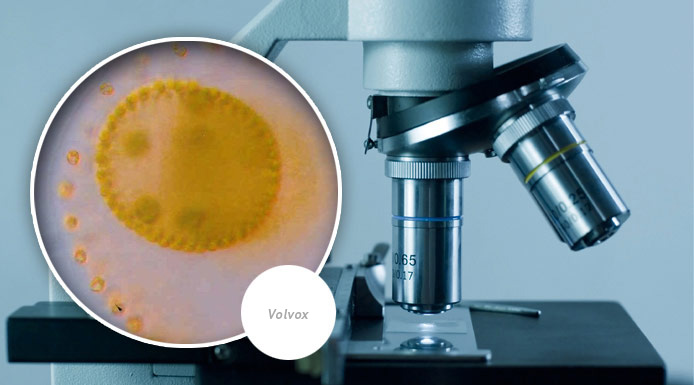
Volvox =
cell (0.004 to 0.008 mm) colony (up to 2 mm)
Green algae can be colonial (Volvox, Scenedesmus), filamentous (Spirogyra, Cladophora, Oedogonium) or unicellular (Closterium, Micrasterias, Cosmarium).
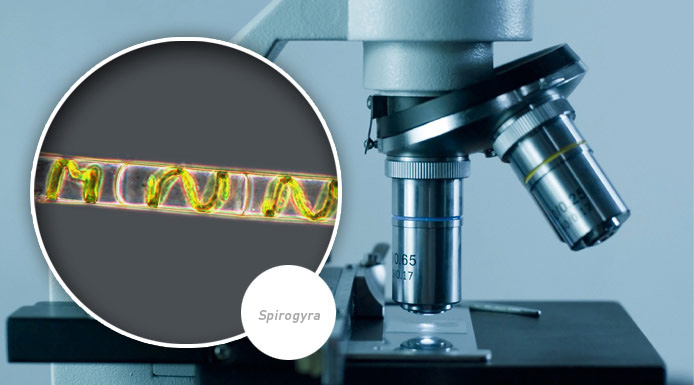
Spirogyra =
cell (0.01 to 0.1 mm)
and filament (few cm)
This photo shows the filamentous alga Spirogyra.
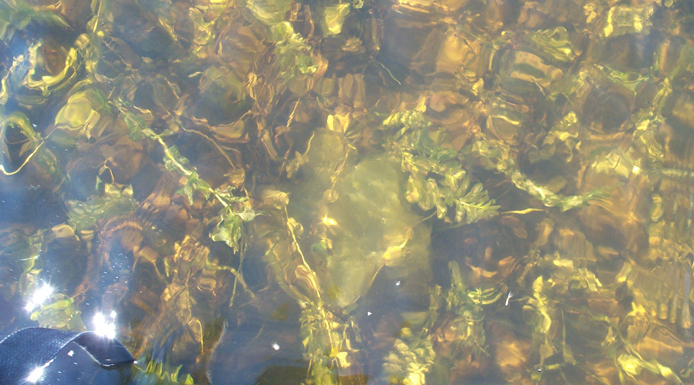
Mass of filamentous algae floating among aquatic plants
Filamentous algae can form masses.
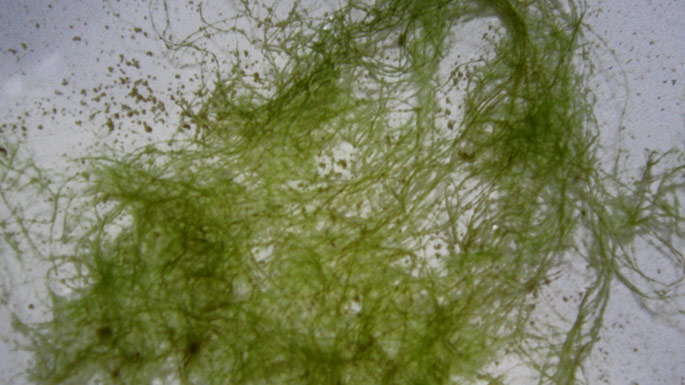
Cladophora
They sometimes resemble tangled hair.
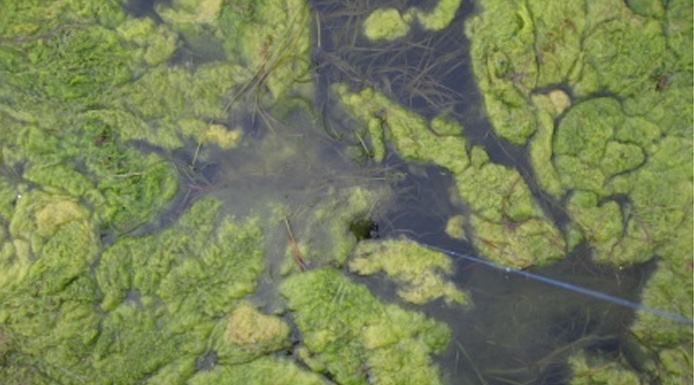
Mass of green algae
Masses of green algae often float to the surface of the water.
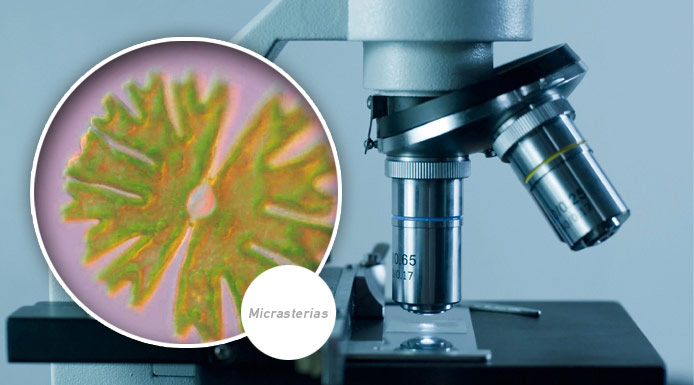
Micrasterias = 0.05 to 0.29 mm
The alga Micrasterias has a star shape.
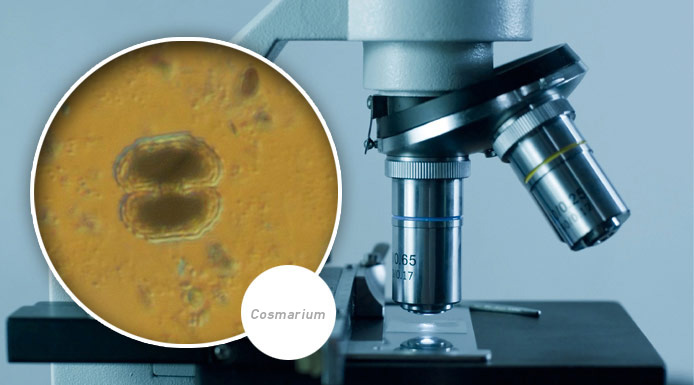
The alga Cosmarium presents a more spherical shape.
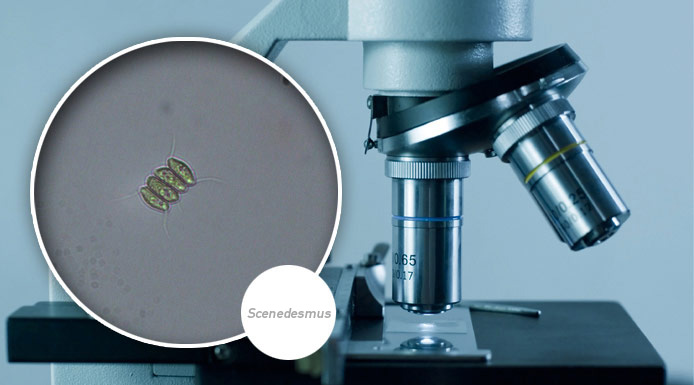
Scenedesmus = 0,04 mm
Some species of green algae have flagella that give them some motility.
VIDEO - 0 min 20 s
Volvox is a colonial alga made up of between 1,000 and 3,000 individuals, each with two flagella. These individuals are connected to each other by strands of cytoplasm.
This page contains videos that require Javascript and Adobe Flash Player to be activated. If you wish not to activate these functions, we offer pictures from the original videos.
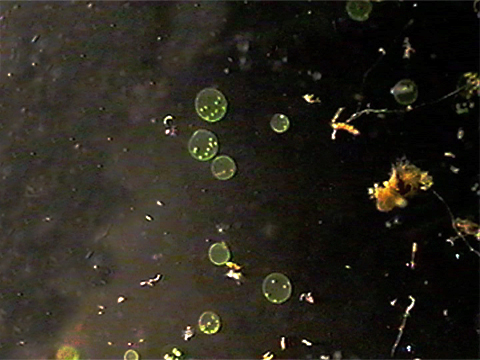
VIDEO - 0 min 15 s
The connections hold the colony together and coordinate the motions of the flagella so the colony can move around.
This page contains videos that require Javascript and Adobe Flash Player to be activated. If you wish not to activate these functions, we offer pictures from the original videos.

VIDEO - 0 min 07 s
In the centre, you can see the «daughter» colonies, which result from the division of cells from the «mother» colony.
Once they are fully developed, the «mother» colony disintegrates, freeing the «daughter» colonies.
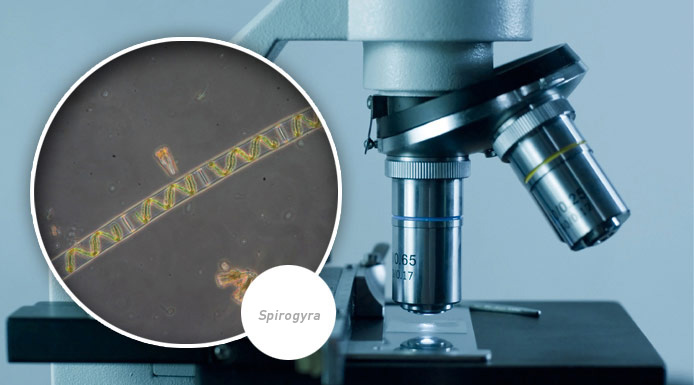
Spirogyra = 0.01 to 0.1 mm
Spirogyra is a filamentous green alga whose cells are organized into long ribbons.
This species is easily recognized by its long, chloroplasts arranged in spirals. Chloroplasts are the structures where photosynthesis takes place.
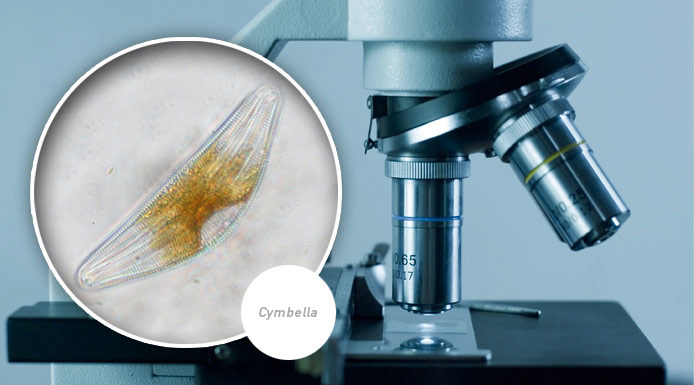
Chrysophytes or golden brown algae:
Diatoms are small unicellular algae, easily recognized by their unique structure with two nested valves forming a resistant exoskeleton. Species are identified by the shape of their exoskeleton.
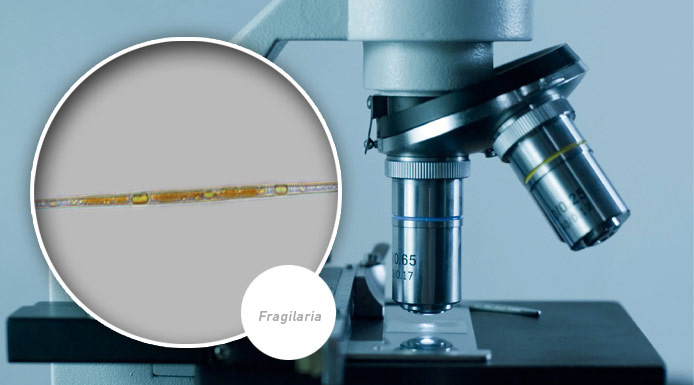
Fragilaria = 0.04 to 0.11 mm
The alga Fragilaria shows a yellow ocher color.
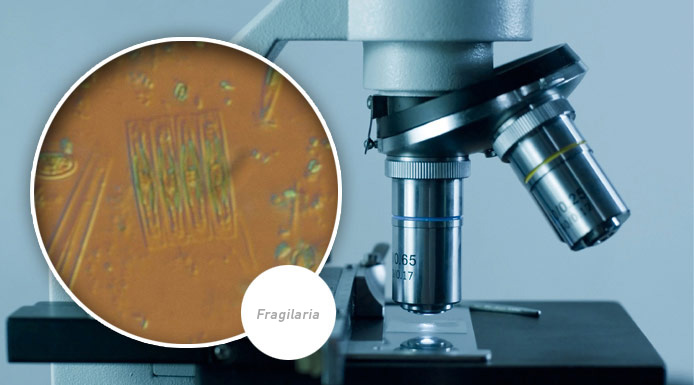
Here, from another angle.
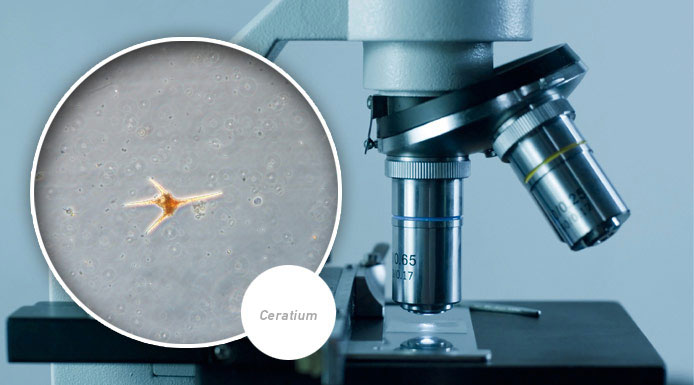
Ceratium = 0.54 mm
Dinoflagellates:
Dinoflagellates are unicellular algae that are commonly encased in a theca, a protective calcareous enveloppe. They have two flagella of different lengths that allow them to move around.
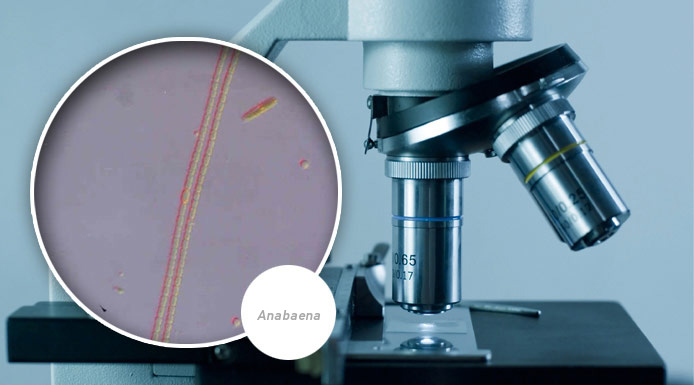
Anabaena = 0.01 mm
Cyanobacteria:
Cyanobacteria are bacteria. They are also known as blue-green algae because they contain both chlorophyll, which gives them a greenish colour, and phycocyanine, another pigment that gives them a bluish colour.
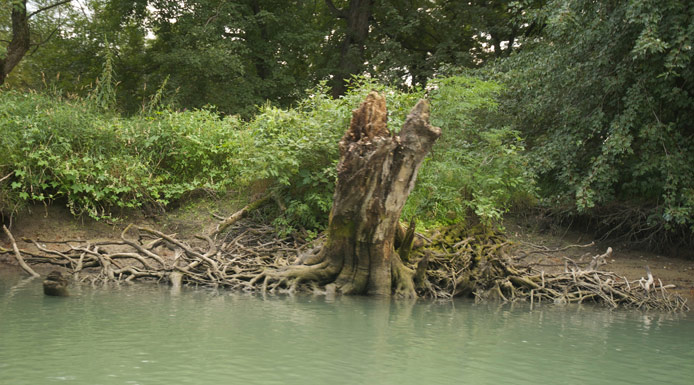
Channel near Yamaska River
Cyanobacteria are among the most ancient organisms on Earth. They are usually found in most lakes.
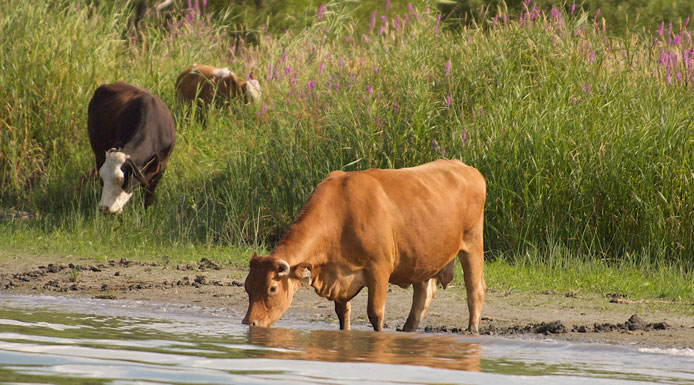
These algae can produce toxins that create health problems in both humans and animals.
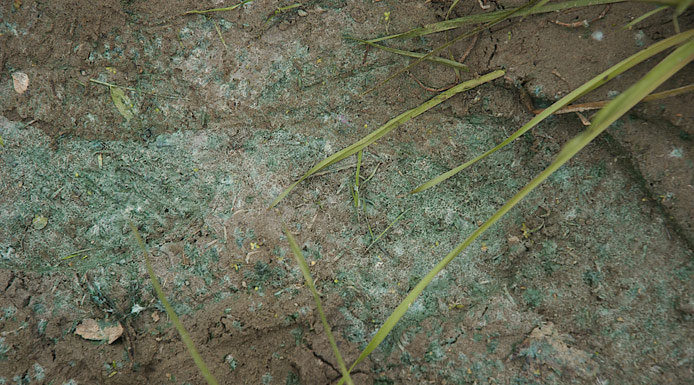
Yamaska River’s bank
Cyanobacteria are usually noticed only during algal blooms, but they are generally invisible to the naked eye.
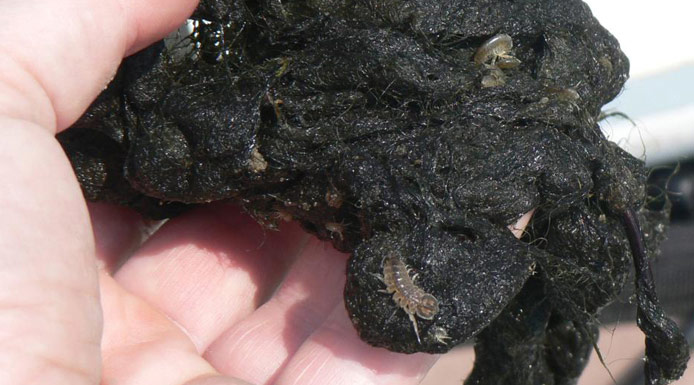
Lyngbya full of amphipods and isopods
Some species of cyanobacteria form mats on the lake bottom, while others live in the water column.
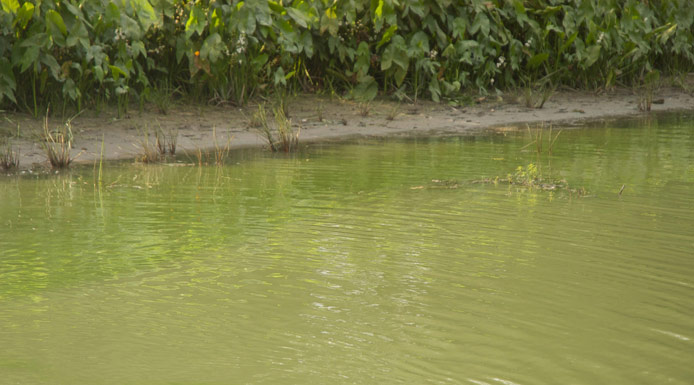
Yamaska River
Higher levels of nutrients, and especially of phosphorus, cause cyanobacteria to increase significantly.
